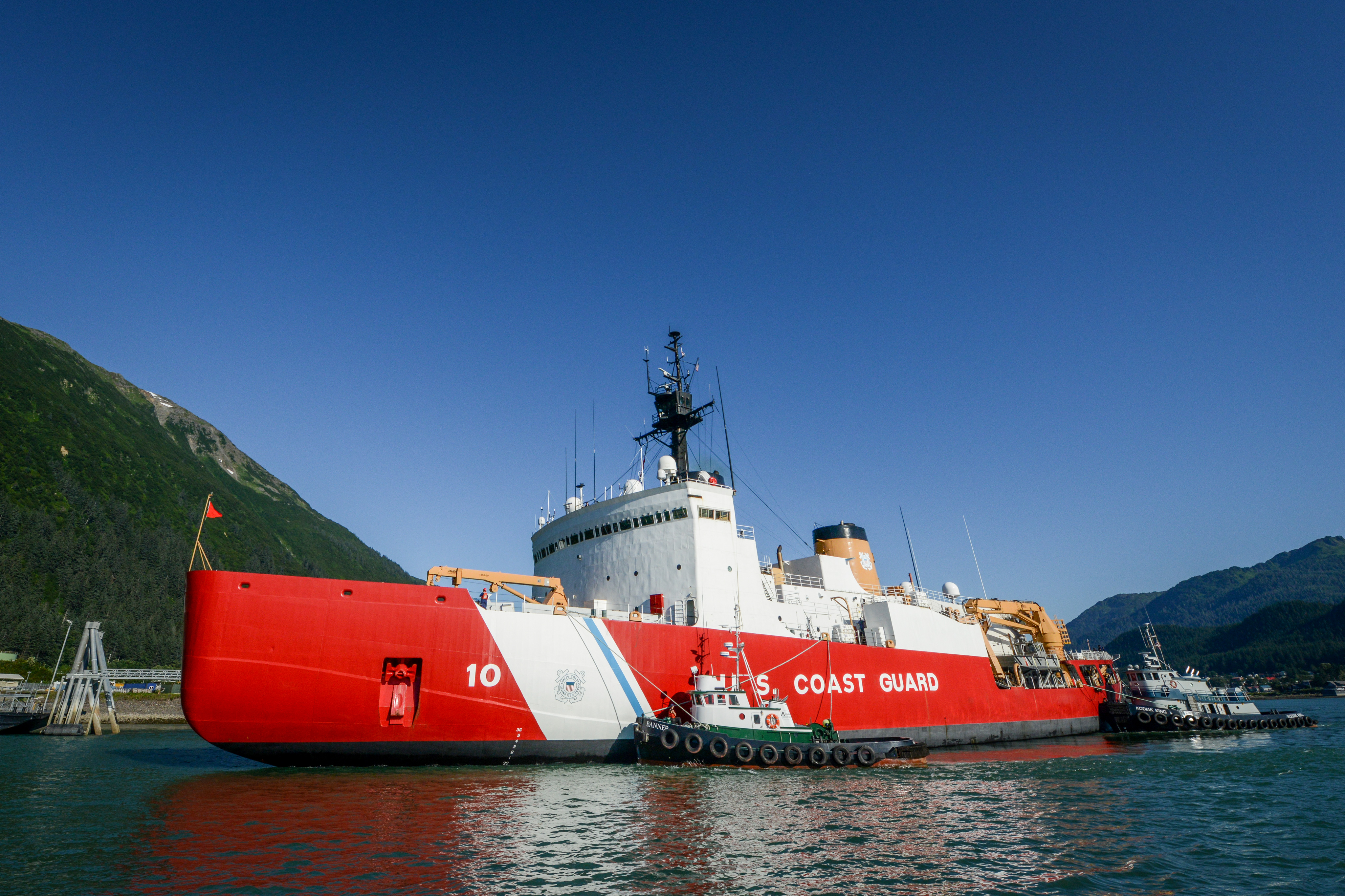The US is finally picking up the pace to build a modern heavy icebreaker
ANALYSIS: A perfect storm of circumstances has put the U.S. well behind other nations when it comes to icebreaking capacity. It won't be easy to catch up.

In his annual state-of-the-nation address earlier this year, Russian President Vladimir Putin attracted headlines in the U.S. for his aggressive comments about Russian military might, claiming to have developed a new “invincible” missile.
What attracted less attention was the reiteration of Putin’s ambitious vision for expanded trade and commerce in the Arctic.
He said cargo traffic would rise tenfold along the Northern Sea Route by 2025, while industrial and military expansion in the Arctic would continue, backed by a fleet of icebreakers to guarantee Russia’s influence.
“Russia builds cutting-edge nuclear icebreakers. We have had the most powerful icebreaker fleet in the world, and this will remain so,” he said.
While there is reason to question some of the claims that Putin made that day about Russian weapons, the icebreaker prediction seems a safe bet.
Russia has 44 operational icebreakers, with 15 more planned or under construction, according to the Congressional Research Service. Finland has 10, while Canada and Sweden each have seven.
China, which has one icebreaker, has announced that its first domestically produced icebreaker should be ready for Arctic travel in a year.
The United States has four operational icebreakers, two of them owned by the government and two owned by a private contractor.
Twelve years ago the National Academy of Sciences was calling for the immediate construction of new Coast Guard icebreakers to replace the Polar Sea and the Polar Star, the two ships capable of traveling in heavy ice.
The Polar Sea broke down in 2010 and has been cannibalized for parts since then, while the Coast Guard spends $15 million a year to keep the Polar Star afloat.
In an appearance last November, Rex Tillerson, then the U.S. Secretary of State, said that the Coast Guard is “very proud” of the 42-year-old Polar Star, “as crummy as it is.”
After many years of inaction on a replacement plan, the likelihood of getting at least one new U.S. icebreaker has improved.
Congress has approved advanced funding and the Trump administration is backing a plan to spend $750 million in the next budget year to finish the job.
The new icebreaker would begin sea trials in 2023 and the Polar Star would need to be kept running for two years after that, the Coast Guard says. Time is short.
Today, the U.S. is “one major casualty away from leaving the nation without any heavy icebreaking capability,” Coast Guard Commandant Adm. Paul Zukunft told a Congressional subcommittee March 14.
One of the points of contention is whether the Congress would agree to a multi-year effort to fund icebreakers for the future, ordering multiple ships instead of one at a time.
Because the U.S. has not built a heavy icebreaker for more than 40 years, private companies are not geared up for the project and they may need long-term commitments. Critics say that approach reduces Congressional flexibility and oversight.
“The reality is our industrial base in this area has not only atrophied, it ‘s just vanished,” Coast Guard Vice Commandant Adm. Charles Michel said April 9 at the Sea-Air-Space Exposition in Maryland.
“Almost all the cutting edge ice-breaking techniques are foreign,” he said.
It’s not at all clear that the enthusiasm for funding one icebreaker will automatically translate into funding for additional ships that will be needed as breakneck change continues in the Arctic and Coast Guard faces greater responsibility.
The long-term budget plans do not include the additional billions needed for more ships. The Coast Guard says it needs three heavy icebreakers and three medium icebreakers.
The inherent conflict between spending and taxes encourages government officials to avoid long term planning whenever possible.
The U.S. has moved heavily into deficit spending with its recent giant corporate tax cut and downplaying future needs is one way to make the current level of taxation and spending appear less unbalanced than it really is.
A year ago a draft Trump administration budget proposed a $1.3 billion cut to the overall U.S. Coast Guard budget, claiming the money was needed to help build the “big beautiful wall” with Mexico.
Trump backed off, proposed a stable budget and Congress increased it, including money to speed up acquisition of a new icebreaker. Now Trump has endorsed the money for a new icebreaker.
Decades of neglect have led to this situation, with national security and environmental threats exacerbated by the commitment of Russia, China and other nations to a real polar presence.
For Russia, which has nearly 15,000 miles of Arctic coastline, the icebreaking investment is an obvious choice.
The U.S. Arctic Coast is a far more limited proposition, but the growing international focus on the Arctic has turned the icebreaker gap into a crisis.
Meanwhile, a French company has announced plans for an icebreaking cruise ship for the Arctic. Ponant says its icebreaker, to be built in Romania, will be carrying passengers to the North Pole in luxury by 2021, two years before the U.S. Coast Guard receives a new vessel.
“As for the geographic North Pole, it will no longer be an inaccessible dream,” a Ponant official boasts.
Columnist Dermot Cole lives in Fairbanks. He can be reached at [email protected].